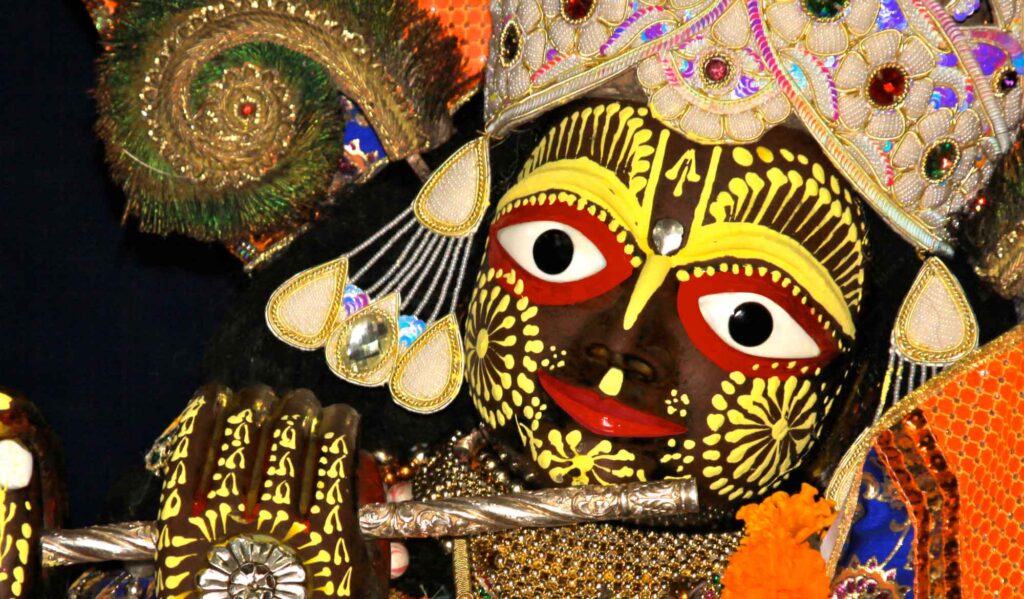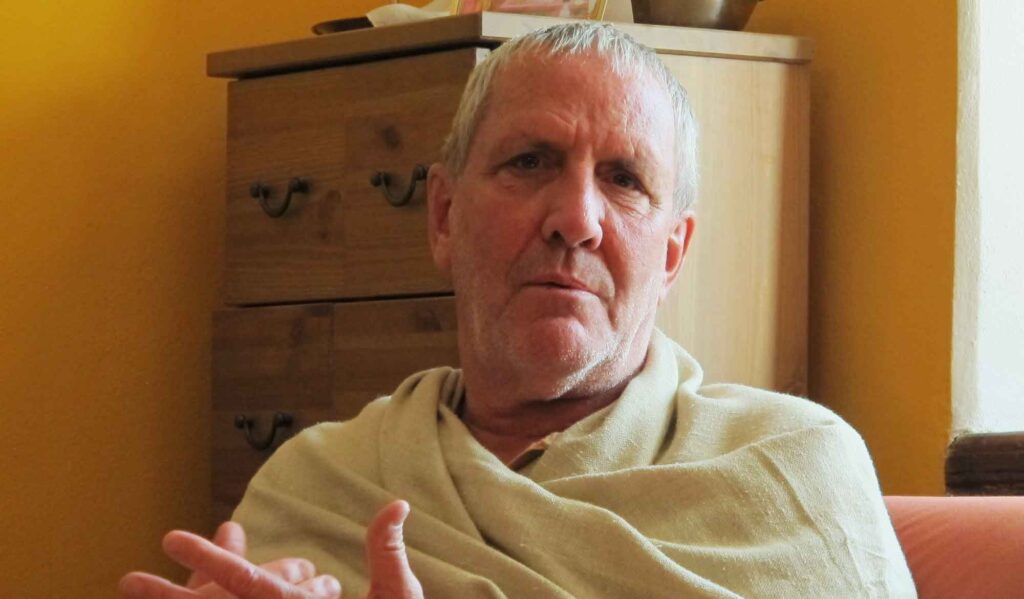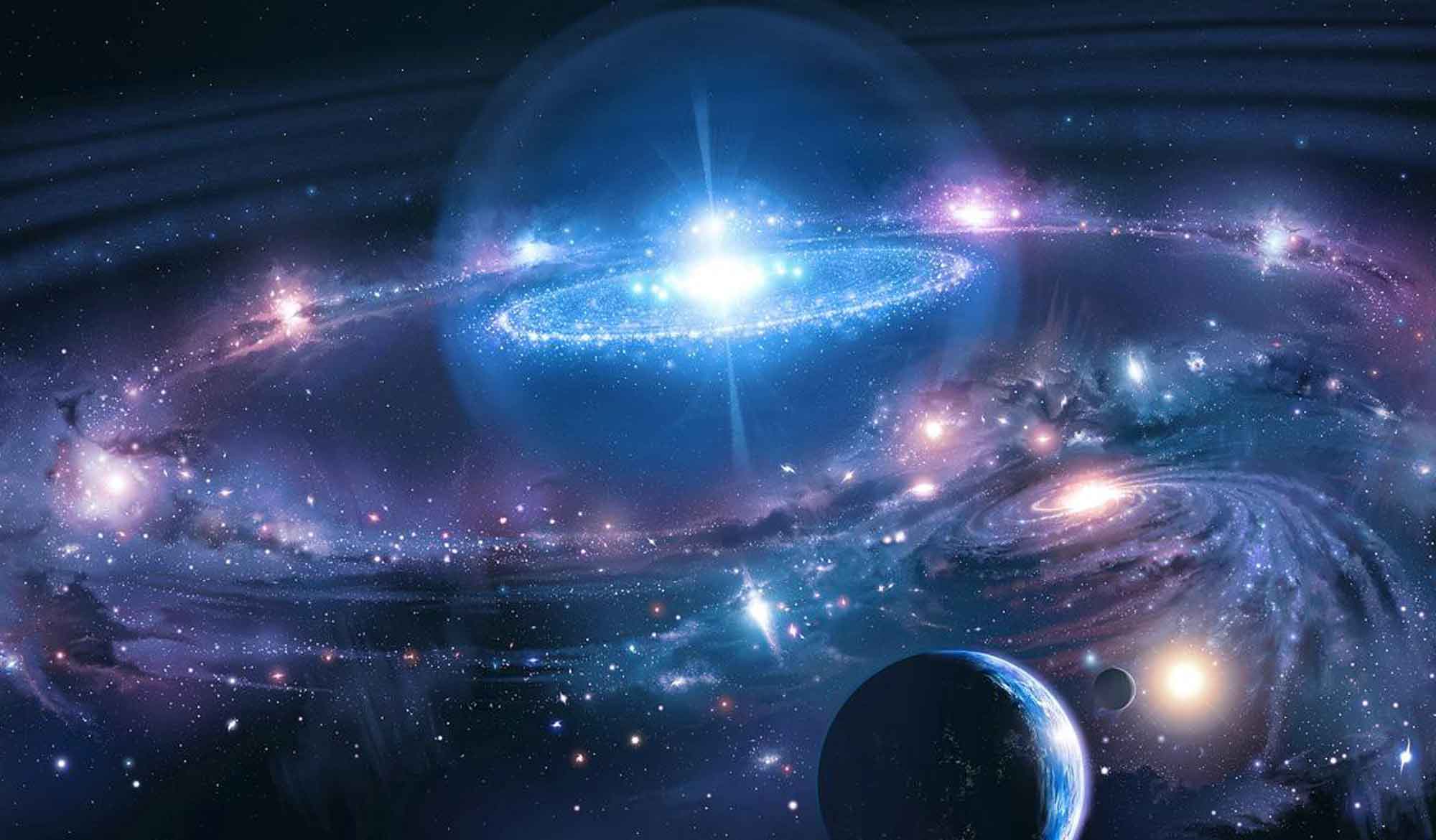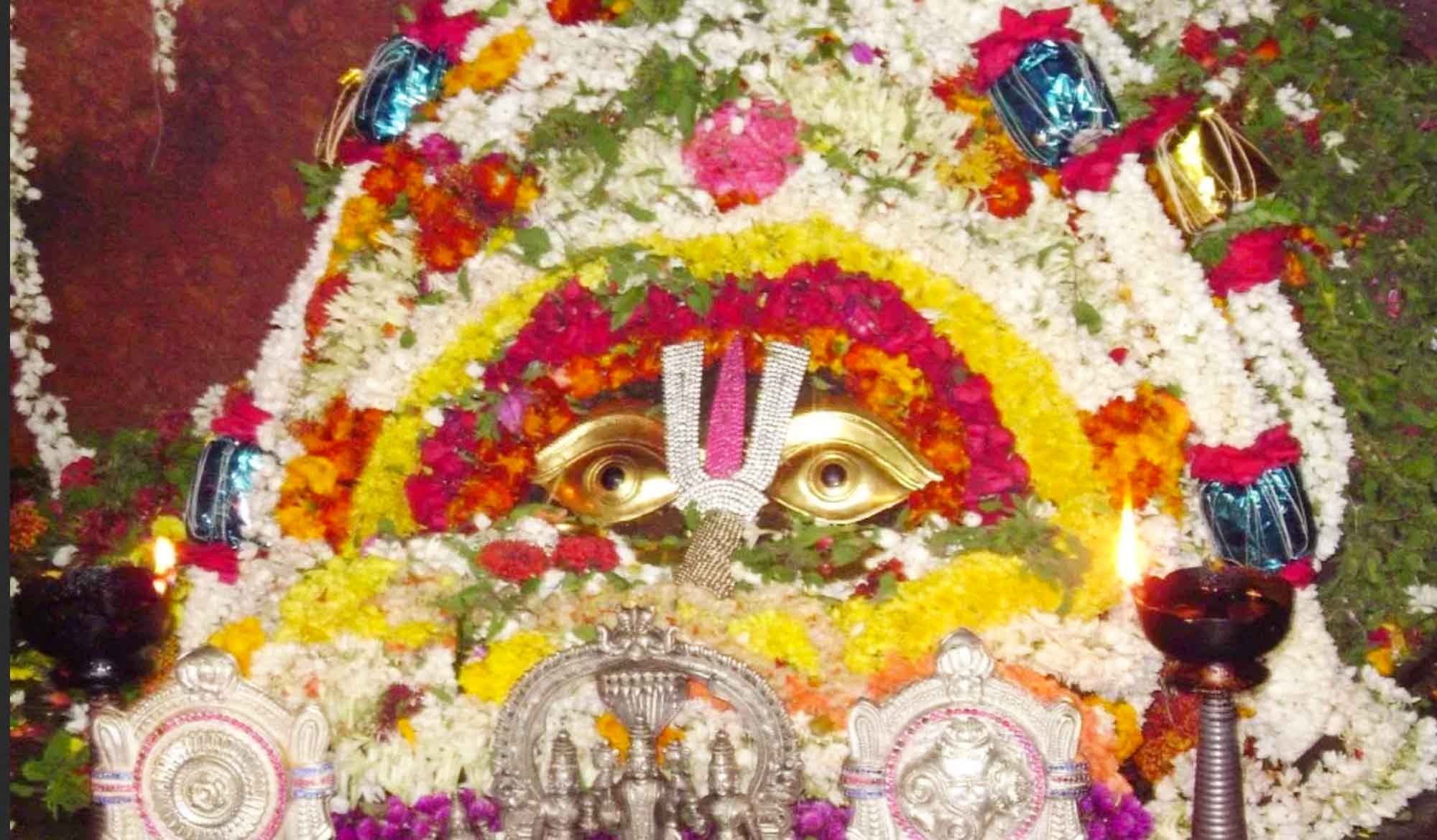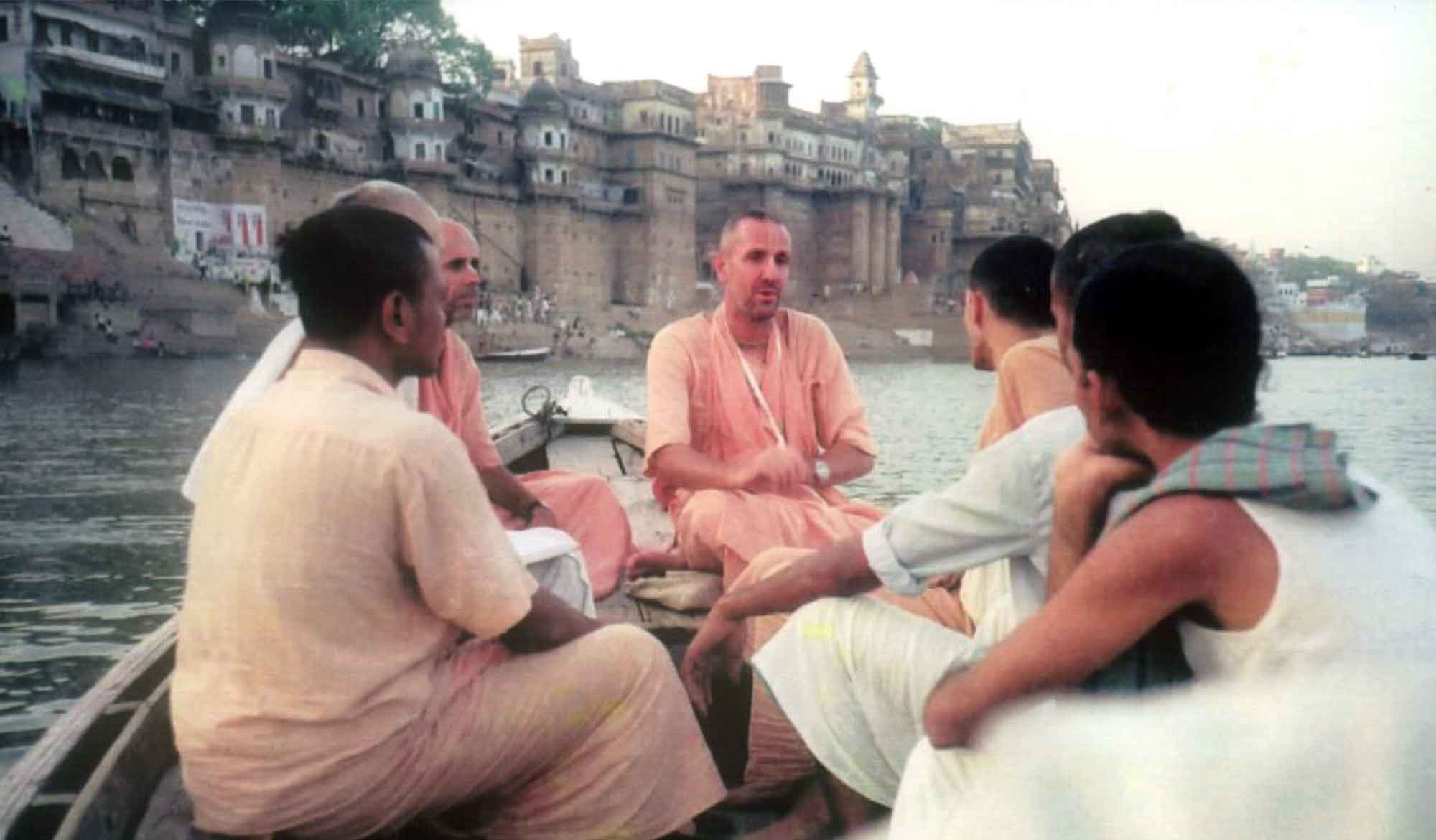by Swami B.G. Narasingha
In this previously unpublished article written in March 2019, Śrīla B.G. Narasiṅgha Mahārāja answers a godbrother’s question concerning the position of Keśava Kaśmīrī and Nimbārkācārya, citing the biography of Śrīmad B.P. Keśava Mahārāja and Sarasvatī Ṭhākura’s commentary to Śrī Caitanya Bhāgavata.
QUESTION: From your Let’s Talk about Vallabhācārya, I forgot to ask you about Keśava Kāśmīrī who you stated left after being defeated by Nimāi Paṇḍita in great anger. I can’t recall the section from Caitanya–caritāmṛta, but I always thought he surrendered to the Lord and became a great devotee. The movie depicts it like that too.
ANSWER: Our statement regarding the Kāśmīrī Paṇḍita mainly comes from the biography of Bhakti Prajñāna Keśava Mahārāja (Prabhupāda’s sannyāsa guru) and from statements by Śrīla Bhaktisiddhānta Sarasvatī Ṭhākura in his commentary to Caitanya–bhāgavata.
“Sometime in 1956, Śrīla Gurudeva (Keśava Mahārāja) came to Mathurā to Sri Keśavajī Gauḍīya Maṭha. At that time, the followers of the Nimbārka sampradāya in Vṛndāvana were publishing a spiritual journal called Śrī Sudarśana. In one issue, they cast false claims about Śrī Caitanya Mahāprabhu, saying that He was a disciple of Keśava Kaśmīrī. In other issues they dared to claim that Gauḍīya Vaiṣṇava ācāryas such as Srila Viśvanātha Cakravartī Ṭhākura were in the Nimbārka sampradāya. When we showed these issues (statements) to Śrīla Gurudeva (Keśava Mahārāja), he became extremely angry and immediately had a short essay written for Śrī Bhāgavata–pātrika. The headline was ‘Śrī Nimbāditya and Nimbārka are not the same person.’ The gist of the essay is as follows:
“Nowhere in the scriptures is there any mention of a Nimbārka sampradāya. The Purāṇas mention a Vaiṣṇava ācārya called Śrī Nimbāditya (Dvārapa-yuga) and the sampradāya of the Catuḥsana (the four Kumāras) accept this Nimbādityācārya as their sampradāya–ācārya in the age of Kali. However, Nimbārka Svāmī is a completely different person. Nimbāditya was a disciple of Nārada Muni at the end of Dvāpara-yuga and the beginning of Kali-yuga, but Nimbārkācārya appeared much more recently. Great and eminent authors of bona fide scriptures, such as Srila Jiva Gosvāmī, have mentioned the names of the prominent ācāryas of all the other sampradāyas, but they have not mentioned the name of Nimbārkācārya anywhere.”
“The Nimbārka sampradāya currently uses the Pārijāta–bhāṣya, which was written not by Nimbādityācārya, but rather by a certain Śrīnivāsa and Keśava Kaśmīrī, who then presented it as having been written by Nimbādityācārya. The scriptures of the Six Gosvāmīs mention the names of ācāryas such as Śrī Rāmānuja, Śrī Madhva, Śrī Viṣṇusvāmī, Śrī Nimbāditya and Śrī Vallabhācārya. If the Nimbārka sampradāya had existed even to a slight extent at that time, then they would most certainly have mentioned the name of Nimbārkācārya as well. None of the other sampradāya ācāryas, such as Śrī Rāmānuja, Śrī Madhva and Śrī Viṣṇusvāmī, have mentioned Nimbārkācārya’s name in any of the scriptures that they have written.”
‘When this essay appeared in Śrī Bhāgavata-pātrika, the publishers of the Sudarśana Journal announced that they were making arrangements to prosecute for slander. Śrīla Gurudeva (Keśava Mahārāja) replied firmly, “We will prove each and every word that we have written on the basis of evidence supported by śāstra.” When the prosecution party heard about Srila Gurudeva’s immense scriptural knowledge and profound personality, they became absolutely silent, and from that day onward they did not dare to write any more nonsense (against the Gauḍīya sampradāya)””.
Here also is a quote from Bhaktisiddhanta Sarasvatī Ṭhākura explaining how Keśava Paṇḍita, as well as Vallabhācārya, left the lotus feet of Mahāprabhu and established their own “independent sampradāyas’. Please read carefully to understand properly.
Śrīla Sarasvatī Ṭhākura writes as follows:
“One who rejects the worship of Kṛṣṇa cannot properly explain the purport of Vedanta philosophy, one of the six branches of philosophy. Being initiated into all these instructions, the compiler of Krama–dīpikā (Keśava Kāśmīrī) instructed his disciples headed by Gaṅgālya Bhaṭṭa about the process of worshiping Rādhā-Govinda. Later on, Keśava Paṇḍita and other scholars of Kaśmīra left the subordination of Śrīman Mahāprabhu and took to another path.
“Turning away from the mercy of Śrīman Mahāprabhu, Keśava Kāśmīrī and other so-called followers of the Śrī Nimbārka sampradāya, as well as so-called scholars of the Sri Vallabha sampradāya, rejected the most beneficial and pure lotus feet of Śrīman Mahāprabhu.” (Caitanya-bhagāvata, Ādi-Khāṇḍa 13.177, purport)
So to summarize – Nimbāditya was a disciple of Nārada Muni at the end of Dvāpara-yuga, at a time before Vyāsadeva had written the Vedānta. Therefore, Nimbāditya could not have written his Pārijāta–bhāṣya commentary on Vedānta-sūtra. The Pārijāta–bhāṣya was written more than 4500 years later by the Kāśmīrī Paṇḍita with the claim that it was written by a certain Nimbārkācārya whom they tried to claim was the same person as Nimbāditya Ācārya. Nimbārka actually never existed. Thus there is actually no Nimbārka sampradāya, it’s an elaborate hoax (much like Christianity).
More Articles by Swami B.G. Narasingha
Modern Science and the Vedas
'Modern Science and the Vedas' was written by Swami Narasingha in October 2009. In this article, Narasingha Maharaja explains that the scientific theories such as parallel universes, string theory and dark matter may already have been explained in the Vedas, and in particular, in the philosophical system of Sāṅkhya.
Kūrma-kṣetra
"Kūrma-kṣetra" was written by Śrīla B.G. Narasiṅgha Mahārāja for 'Back to Godhead' magazine (January 23rd 1988). This article is a travelogue wherein Mahārāja describes his pilgrimage to Kūrma-kṣetra - a famous temple in Andhra Pradesh, South India, home to the Deity of Kūrma.
Banaras – The City of Light
“Banaras - The City of Light” was originally written by Śrīla Narasiṅgha Mahārāja for Clarion Call magazine in 1990. This article explains something of the history of Banaras and its significance to Hindus.

